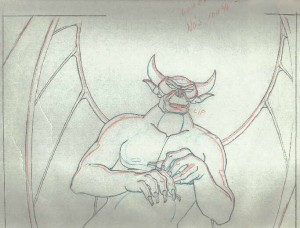(An excerpt from my 2006 travel blog).
What I discovered at the Louvre is that basically I’m a philistine. You may have already worked this out, but exposing myself to the world’s finest art collection really rammed it home. It’s not that I didn’t enjoy it: it’s all good stuff. But I just can’t get as excited about great art and sculpture as I know I should.

I mean, with the Mona Lisa, I agree that Leonardo managed a great enigmatic smile on that thing. An exceptionally good enigmatic smile even. But given the Mona Lisa is apparently valued for insurance purposes in the order of $650 million dollars – well, it’s not that good a smile.
I’ll freely admit this is my own ignorance showing. Basically, I just don’t know enough about these things to really appreciate the importance, the significance, and the context of what I’m seeing. That’s why I get much more excited about the architecture of the Louvre itself: I know a little more about that side of things. Having seen I.M. Pei’s famous (and formerly controversial) pyramid, I can confirm I like it. (Much to the relief of the French I’m sure). Call me dense though – I’d never realised that it isn’t actually attached to the original Louvre buildings. This makes the “But they added a pyramid to the Louvre” argument that has been the catch-all rationalisation for ghastly additions to heritage buildings since 1989 therefore seem even more tenuous.
If I can dwell a little more on the way knowledge and ignorance has shaped my artistic priorities, the day after I went to the Louvre I went to the Grand Palais to see an exhibition of artwork from the Disney studios that happened to be in town. As far as I can establish, this has been the largest public display of material from the Disney archives ever. They had a lot of the concept and design drawings by people like Mary Blair, Eyvind Earle, Albert Hurter, and Joe Grant, as well as background drawings and – best of all – original animation drawings, including some of Ub Iwerks stuff for the earliest Mickey Mouse shorts and some of Bill Tytla’s original drawings of Chernobog for the Night on Bald Mountain sequence in Fantasia. They even had some stuff that might have impressed people interested in proper art, most notably Salvador Dali’s drawings for Destino, the short that Disney and Dali started work on in 1945, and which wasn’t completed until 2003.
Because I actually know about this stuff, it meant a lot more to me, and I got a real buzz out of seeing the Tytla drawings in particular. Tytla was the best animator at the Disney studio at the time when it was producing the finest animation that has ever been produced, and if the art of animation has had a Leonardo da Vinci it’s Tytla. And if he has a Mona Lisa, it’s the Chernobog sequence, which is often cited as the best bit of animation ever done. So this is why I got such a thrill out of seeing it, and why for me at least it meant more than seeing the really important stuff the day before at the Louvre.

